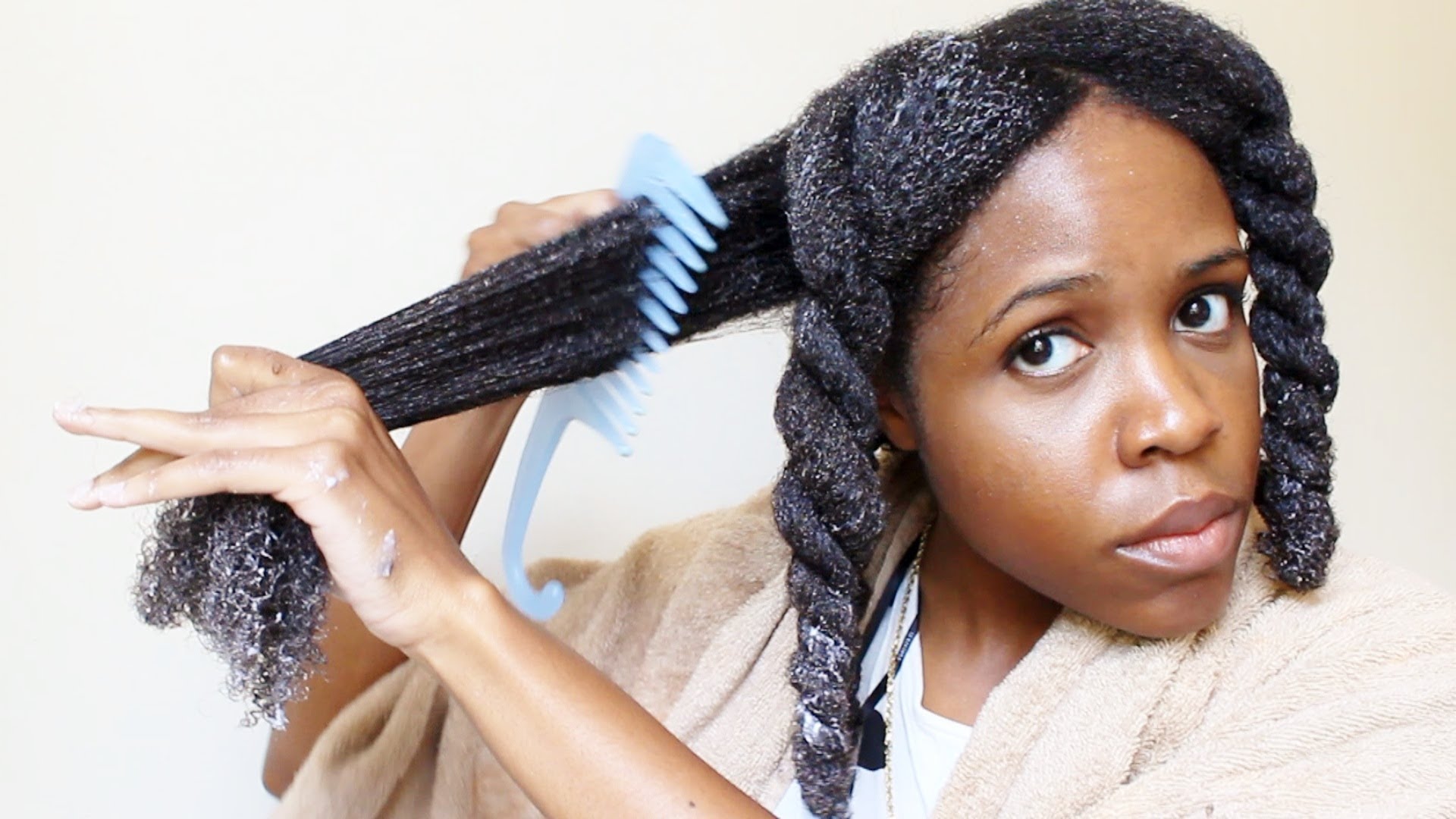
Detangling
As we mentioned 4c natural hair is prone to tangles because the strands are naturally attracted to each other and love to wrap around each other creating knots. The best way to combat that is to always work in sections before you do anything else.
Section your hair neatly into 4-6 sections. It really helps to focus on your parts when sectioning your hair because it will make things so much easier for you as you go through your wash day.
Youtuber Kimmaytube had a neat parting trick she introduced to her audience in 2015 that I think is awesome for those of you who need a great parting hack. Watch below:
https://www.youtube.com/watch?v=0xEWJUBSpRU
The second truth about 4C natural hair is that it tangles and you have to care for your hair in a way that avoids tangles in the long run.
Another great way to avoid tangles is by stretching your natural hair so that the strands are less prone to wrap around each other.
Stretching your natural hair can take a variety of forms that are considered healthy for your hair. You can use twists, braids, Bantu knots, the banding method or a blow dryer* on the cool setting to stretch your hair after washing it.
In the below video Kimmaytube does what she calls a mid-level stretch which is another hack you can possibly incorporate into your regimen for your 4c natural hair.
Watch below:
https://www.youtube.com/watch?v=iULBi_yYZ_o
Protective styling
Protective styling for 4C natural hair is so important we had to bring it under its own category because when we talk to women who have long healthy 4c natural hair, protective styles are an integral part of their hair regimen. This is the third most important truth about 4C natural hair.
Protective styling is styling your hair in ways that protect the length of your hair including your ends. These days when we protective style we tend to think about fancy styles like, box braids, crochet braids and all sorts of styles that might actually cause damage to your edges and crown.
While some of these styles might be great some are really counter productive especially if they damage your hairline. When we talk about protective styles we are talking about basic styles like loose twists, two strand twists, flat twists, cornrows, mini twists and simple braids all of which are mostly done without added hair.
For effective 4c protective styling, you have to incorporate it for most of the week if not all week to reduce your manipulation and exposure of your ends. When you protective style your hair you also are able to retain moisture longer and you will retain more length.
The benefits of loose twists
Loose twists are one of the bet protective styles out there for 4C natural hair and one of our favorites to talk about here. Read this detailed post here.
Loose twists are simply miniature twists installed all over your head as a means of protecting your hair, and keeping the strands separated and largely detangled.
Most women who do this, tend to braid or twist tightly, the roots of their hair and loosely twist the length to keep the hair separated and organized.
With this base they style their hair for the week, they moisturize the twists and some women keep them in for 30 days or longer without much manipulation.
Watch West African Baby talk about her loose twists below:
Mini Twists
Mini twists are also a popular option for women who want to retain length without a ton of manipulation. These twists are simply small two strand twists that can be styled and manipulated as if your hair was out or fully loose.
Some women wear mini twists for 8 weeks at a time which is great for hair retention over time. Watch Mini Marley install her mini twists below:
No I haven’t, I still face difficulties with my 4c hair. It’s so annoying. It breaks alot, it’s very dry, frizzy, it doesn’t retain moisture, products sit on my hair,, I have spent alot on my hair, but there’s still no change. It has never passed my ear, I don’t even know what products to use anymore.
I have used JBCO, Jojoba oil, aloe vera gel, rice water DIYs, no change, please help me